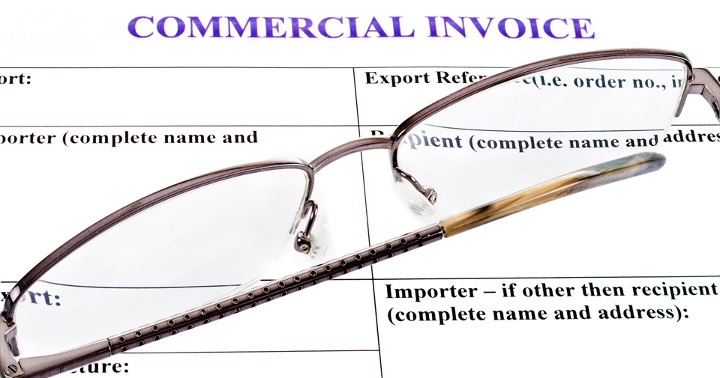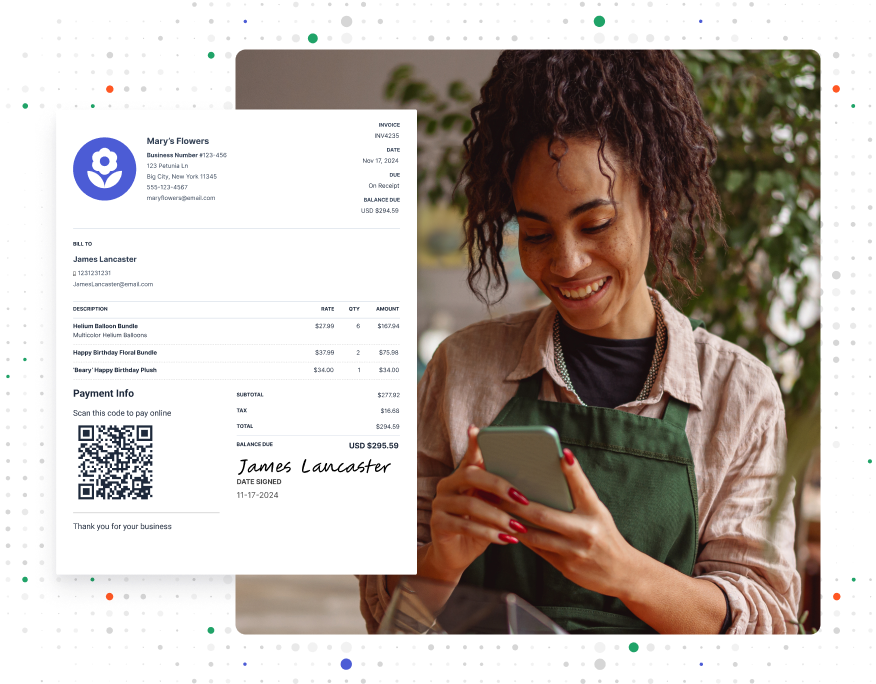What is a Commercial Invoice?

If you ship goods to another country, you need to create a commercial invoice. This document is a must-have for international shipping. It includes key details that customs officials will check before allowing your products out of one country and into another.
Think of your commercial invoice as a golden ticket for your exports. Without it, your goods can’t leave the country. But with accurate commercial invoices, you can send products to buyers anywhere in the world. And, ideally, grow your business in the process.
In this guide, we cover everything you need to know about commercial invoices. Read on to find out when to issue one, how to fill it out, and tips for generating accurate invoices that will make your venture into international trade headache-free.
What Is the Difference Between a Commercial Invoice and an Invoice?

An invoice is a document requesting payment for goods or services.
A commercial invoice is more than that. It covers the basics of a standard invoice, including the following:
- Buyer and seller information
- Invoice number
- Payment due date
- Cost of products purchased
However, a commercial invoice also has details related to international trade, such as the country of origin and the Harmonized System (HS) code.
A basic invoice is similar to a bill. A commercial invoice acts as a bill, but it’s also an export document that ensures a shipment of goods can be traded internationally without causing legal issues for the seller or buyer.
Most importantly, everyone wants customs to approve their shipments. Customs has the authority to control the flow of goods in and out of a country. And they require a commercial invoice to approve it.
FROM ONE OF OUR PARTNERS: How to Make an Invoice for Landscaping Jobs (with Free Template)
When Is a Commercial Invoice Issued?
Any time you send your products internationally, you (as the exporter) have to create a commercial invoice. Actually, you need three. One copy is for the country you’re exporting from. The second is for the receiving country. And the third is for the buyer.
You don’t need this document if you’re shipping within the United States. Nor is it required when shipping between EU countries. However, if you’re sending goods from Alabama to Algeria or from France to Peru, plan on generating a commercial invoice.
Customs officials use this document to:
- Determine what tariffs need to be paid
- Verify the sale—the invoice is considered proof of sale
- Clear the trade so the items can ship
When you generate an accurate commercial invoice and include all the details correctly, your package is shipped right away. On the other hand, problems with your invoice will lead to shipping delays.
That’s why it’s essential to understand what a commercial invoice is and what it should include.
RELATED ARTICLE: Invoicing Tips: Can You Write Off Unpaid Invoices?
What Should Be Included in a Commercial Invoice?

There is no standard format for commercial invoices. However, there are details that you’ll need to include. Here’s a list of the essential elements of a commercial invoice:
Buyer and Seller Info
First things first, include basic details about the exporter (your business) and the importer (your customer).
- Business names
- Addresses, including the street address, city, postal code, and country
- Tax IDs (you’ll include this for your buyer if you’re selling to another company)
Transaction Details
Every invoice has an invoice number. It’s always the next number sequentially after your last invoice. For example, your first invoice would be numbered 001. The next one would be 002.
This number identifies the document and helps both you and the buyer track the transaction amount for tax and accounting purposes.
You’ll also include other transaction details. Customs authorities use these details to determine duties and taxes owed, so make sure everything is accurate.
Here’s what you need:
- Order or purchase number
- Total sale amount
- Payment currency
- Payment due date
- Terms of payment
RELATED ARTICLE: How to Keep Track of Invoices and Payments
Incoterms and Payment Terms
A key differentiator on a commercial invoice is the terms of sale. This is what helps sellers negotiate with buyers. So, they will want to sign the commercial invoice you send! Negotiating payment terms and the details of who will pay for what can make or break business cash flow.
For international trade, these details are known as the Incoterms. They define:
- Who pays for shipping, insurance, and customs fees
- Who arranges transport
- Who is liable for the goods
You can learn more about how to detail the Incoterms on your invoice from the International Trade Administration.
Export Control Classification Number (ECCN)
Shipping electronics or aerospace equipment? You might need a license and an ECCN code.
Certain categories of products fall on the Commerce Control List. If your goods are on this list, you’ll need a license before you can ship a package out of the United States. You’ll also enter the correct ECCN code on your commercial invoice.
You can visit the U.S. Department of Commerce page to figure out if you need an ECCN code. All products that don’t fall into one of the Commerce Control List categories are designated as EAR99.
Harmonized System (HS) Code
The HS code identifies the type of commodity. It’s a six-digit code that customs authorities use to assess duties. They also use it for gathering data on exports and imports.
Not sure what your HS code is?
If you’re exporting from the US, start by finding the Schedule B number. You can look this number up by using the Census Bureau’s Schedule B Search Engine.
Schedule B is a 10-digit code the United States uses to classify exported products. The first six digits are the HS code.
For example, the Schedule B number for sports footwear is 6404.11.0000. So, the HS number is 6404.11.
Product Information
The HS code acts as a universal identifier. But you’ll also need to include a more detailed description of the goods you want to ship. Your commercial invoice should include:
- Name and description of the product
- Item code (SKU number)
- Net and gross weights
- Unit price
- Total price for each type of product
- Subtotal, which is all the totals added together
Overall, you’ll need far more info in your commercial invoice than you would in a standard invoice. Accuracy is also more critical. If there’s a mistake on an invoice you send a local customer, all you have to do is correct the error and resend the invoice. With international trade, there’s more at stake.
Using an online invoice generator like Invoice Simple can streamline the process, help you save time, and prevent costly errors.
With this tool, you can use a pre-made sample invoice template or create a custom template for your commercial invoices. Then, all you need is to fill in the info and send your document. You can also print out the copies you need for customs.
Risks of Not Filling Out a Commercial Invoice Accurately
What does happen if you don’t fill out your invoice correctly?
Issues on commercial invoices can turn into huge headaches, especially if you’re a busy small business owner. If you don’t fill out this document correctly, you could face:
- Fines or penalties
- Delayed shipments of your products
- Seizure of your items by customs officials
4 Tips for Generating Professional, Accurate Commercial Invoices

Here’s your goal: create professional-looking, accurate invoices quickly. When you master commercial invoices, you’ll spend less time on paperwork and problem-solving. And you’ll have more time to sell.
Use these four tips to invoice like a pro:
- Store data in one place. Keep client data, HS codes, and other info in a single system for easy access.
- Customize your commercial invoice. Start with a good template. Then, tailor it to your needs. That will help you create accurate invoices faster.
- Send a pro forma invoice first. This invoice is similar to a quote. Use it to ensure you and your buyer are on the same page in terms of costs and product quantity.
- Use an invoice generator. Save time with an online tool like Invoice Simple. This mobile and web app lets you create, send, and manage your invoices on the go.
Start Your First
Invoice Today
Create customized and professional
invoices and connect with clients
